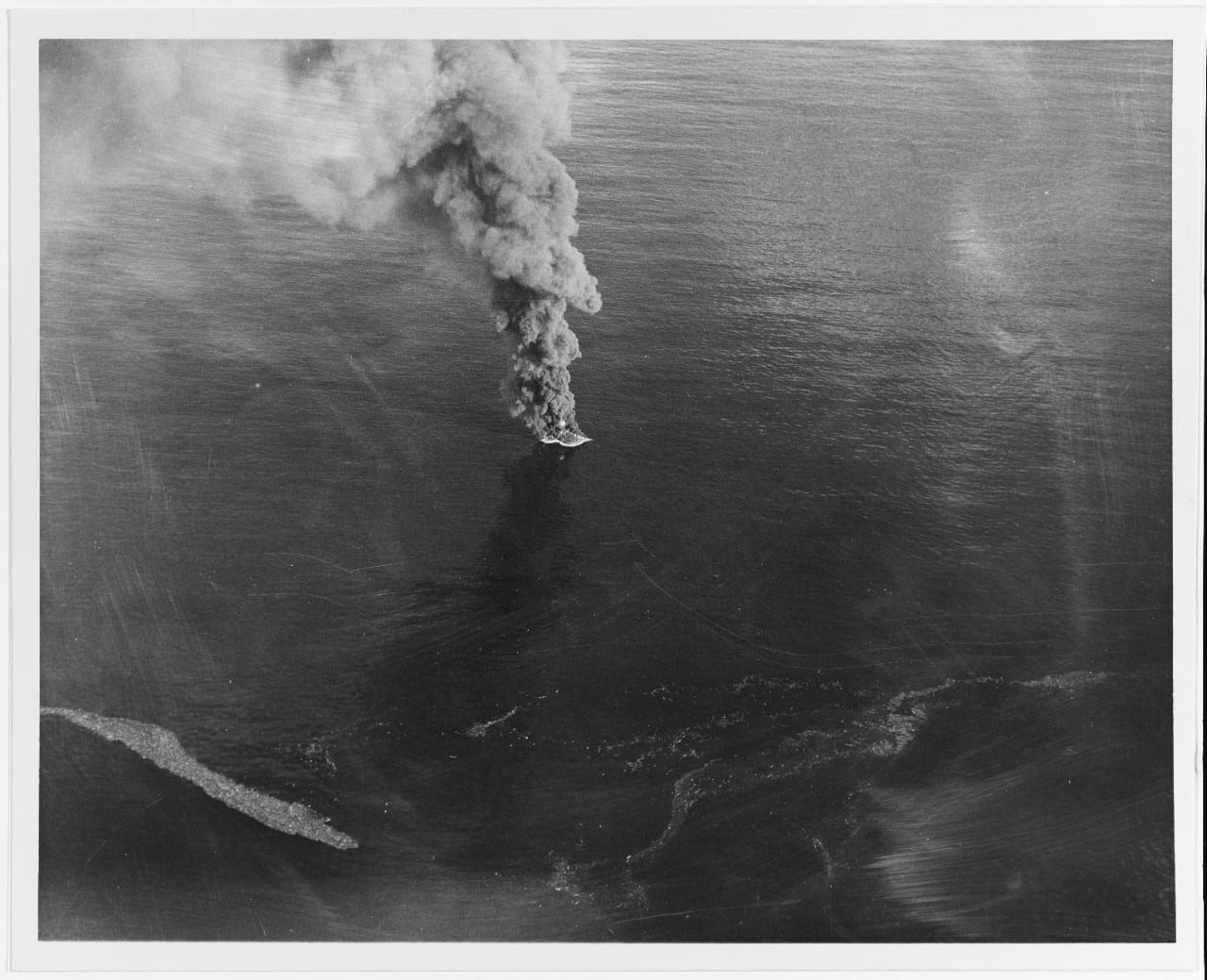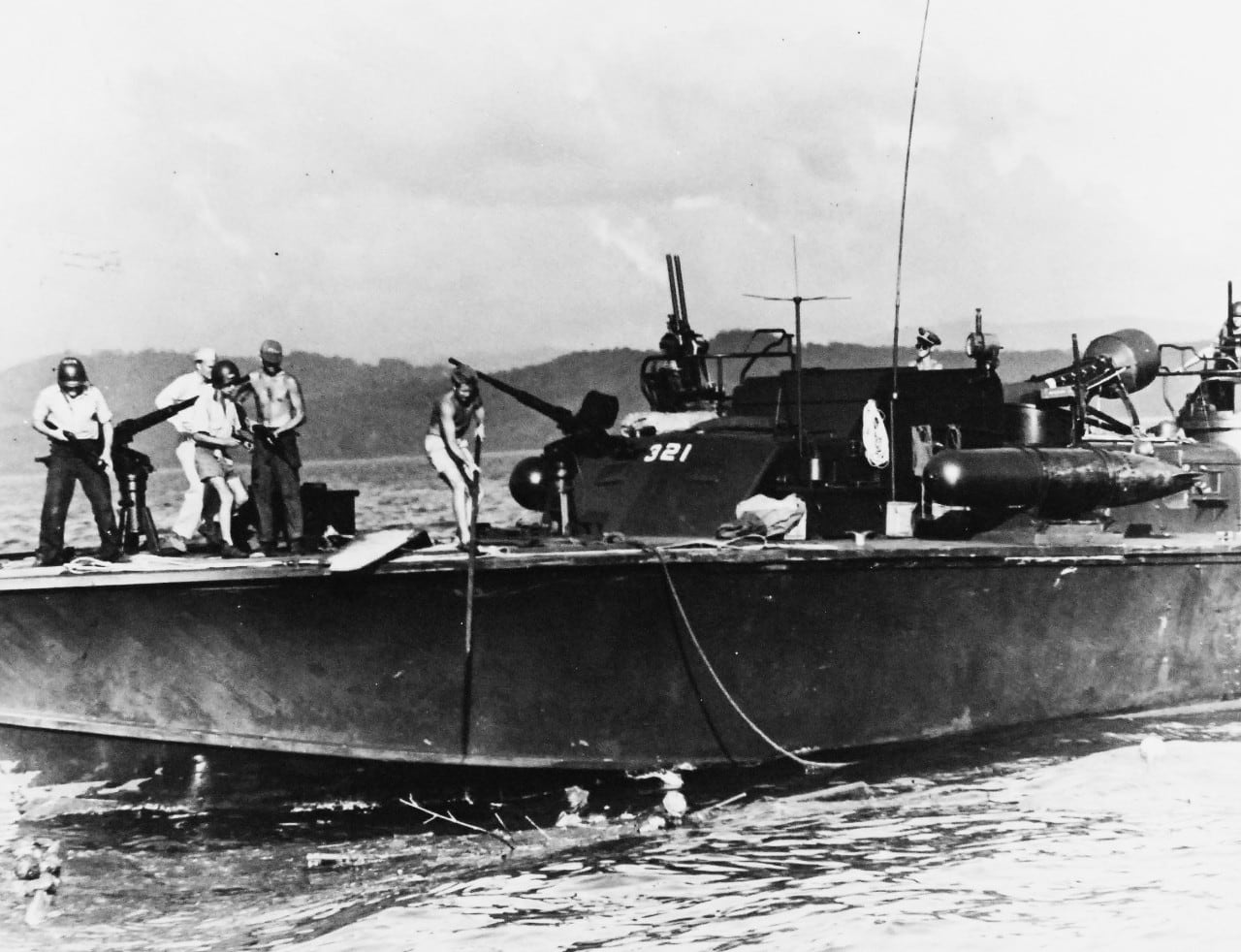The motor torpedo boat (MTB), also known as the patrol torpedo (PT) boat, has acquired its own special swashbuckling aura since the American Civil War, when a Union boat armed with spar torpedoes sank the Confederate ironclad Albemarle. Such exploits made for thrilling literary, film and television fodder, but the public image of the PT boat speeding along, dodging enemy shellfire to sink an enemy warship several times its size, was, in fact, the exception to the rule.
More often, the boats lay in ambush in coastal waters, scouting enemy forces or engaged in rescue operations. Two U.S. Navy PT boat captains awarded the Medal of Honor in World War II were both cases in point: Lt. Cmdr. John Bulkeley received his for evacuating Gen. Douglas MacArthur from the Philippines in March 1942, while Lt. Arthur Preston, spending three hours in Japanese-held waters off Halmahera, rescued a downed aircraft carrier pilot on Sept. 16, 1944.
In contrast to those exploits, little is known about Lt. Isadore Michael Kovar, save for a rare action in which, virtually by chance, he and his crew scored the most significant hit by an American PT boat on a Japanese warship.
Kovar’s moment came on the night of Oct. 24, 1944, when two separated Japanese battle groups were making their way toward the American beachhead on Leyte via the Surigao Strait. The U.S. 7th Fleet’s support force was aware of the oncoming enemy and assembled on the northern tip of the strait to engage them. Awaiting the Japanese first, however, were 39 PTs under Cmdr. Selman Bowling, taking up stations in 13-boat sections along the strait. The PT boat crews welcomed the prospect of action, but their primary task was to lay low and report whatever they saw coming. As night fell, they, rather than aircraft, served as the eyes of the 7th Fleet.
On Oct. 24, a PT section lying off Bohol Island got radar contact. Instead of immediately reporting their discovery, however, the PTs advanced to attack. At three miles from their intended targets, they came under gunfire from the destroyer Shigure. The Battle of Surigao Strait was on.
As the PTs zigzagged toward the Japanese, Shigure’s searchlight fell on PT-152. One of its shells set the craft afire and killed a gunner. Another shell demolished PT-130′s radio, but it relayed its contact report to PT-127, which radioed it to the PT-boat tender Wachapreague. The information reached Rear Adm. Jesse Oldendorf aboard the cruiser Louisville.
Meanwhile, PT-151, PT-146 and PT-190 fought the Japanese with their cannons and torpedoes until driven off. The commander of the lead Japanese battle fleet, Vice Adm. Shoji Nishimura, reported to the leader of the force coming up behind him, Vice Adm. Kiyohide Shima, and to the commander of the lead battle fleet, Vice Adm. Takeo Kurita, that he expected to enter Leyte Gulf at about 01:30 in the morning.
“Several torpedo boats sighted,” Nishimura noted, “but enemy situation otherwise unknown.”
Shortly after 2 a.m., PT-134 tried to attack but was driven off by gunfire while PT-490 tried to attack a destroyer but was hit. PT-493 ran onto the rocks off Panaon Island, where its men were rescued the next morning.
The last PT boat attack ended at 2:13 a.m. For the loss of three men dead and 20 wounded, the boats had scored no hits, but they accomplished their primary mission — pinpointing and reporting the Japanese movements. Aided by that intelligence, Oldendorf made final deployments of his destroyers, cruisers and his battleships: Pennsylvania, California, Tennessee, Mississippi, Maryland and West Virginia.
In the slaughter that followed, Oldendorf’s ships sank the battleships Fuso and Yamashiro, along with destroyers Yamagumo, Michishio and Asagumo. The heavily damaged heavy cruiser Mogami and destroyer Shigure fled southward.
A torpedo miss turned deadly
As Shima’s force emerged from a rain squall, it was ambushed by PT-134, but the latter’s torpedoes missed. A few minutes later, Shima ordered a right turn so that one of his destroyers could stay clear of Panaon Island.
As he did so, however, the destroyer was spotted by Lt. Kovar and the crew of PT-137. The PT boat loosed a single torpedo, then took evasive action under a barrage of star shell.
Kovar’s “fish” ran deep, traveling right under its intended target but, as luck would have it, ran on, right into the light cruiser Abukuma instead. Struck in the boiler room with 37 crewmen dead and its speed reduced to 10 knots, the sorely battered Abukuma had to drop out of formation.
Shima was still proceeding north with his two heavy cruisers, Nachi and Ashigara, when the cruiser Mogami emerged from the fog. Nachi’s captain frantically ordered a change in course to 110 degrees, but he had underestimated Mogami’s speed (he thought it was virtually dead in the water) and the two cruisers collided.
With his flagship’s stern damaged and his speed reduced to 18 knots, Shima ordered his column to retire. While the PTs attempted another attack on the destroyer Shigure, they were fought off, leaving PT-321 slightly damaged.
However, thanks to the relentless PT attacks, Oldendorf’s ships were able to catch up with the slow-moving Mogami. Louisville, Portland and Denver immediately engaged it. Several direct hits rekindled Mogami’s fires and Oldendorf moved on to seek other prey.
Mogami’s speed was down to 6 knots, but it was not quite finished, as PT-491 discovered when it came under its fire. Two torpedoes from PT-491 missed the cruiser, while PT-137 was driven off by its secondary guns. Mogami was not only still full of fight, but had sped up, Kovar reported, to 12 or 14 knots.
The loss of more Japanese ships — including all four of Ozawa’s aircraft carriers off Cape Engaño — was just the anticlimax to a battle already won by the Americans. And worse was still to come.

On the morning of Oct. 25, while the Battle of Leyte Gulf was being decided off Samar, aircraft from Rear Adm. Thomas Sprague’s escort carriers were searching for Shima’s retiring force when 17 of his TBM-1 Avengers found it west of the Surigao Peninsula.
They attacked Mogami and left it dead in the water — for the last time. Destroyer Akebono evacuated the crew and sent it to the bottom with a torpedo.
But the Americans weren’t done meting out punishment.
The Abukuma, limping back to the Dapitan Harbor in Mindanao on Oct. 25, was attacked by B-24 Liberators of the 13th and 5th Air Forces the following morning. Large fires began to swiftly spread throughout the ship before ultimately reaching the torpedo room and blowing a large hole in the light cruiser, which sank, with 250 of its crew, southwest of Negros Island.

Abukuma was one of 22 Japanese warships participating in the carrier attack on Pearl Harbor on Dec. 7, 1941. By the end of the war, only one was still afloat: Ushio, the destroyer that, among other things, had rescued 283 of Abukuma’s crew, including its captain.
Abukuma was also the largest warship whose demise was credited primarily to a PT boat. For that accidental kill, Lt. Kovar was awarded the Navy Cross.
Read the full article here
